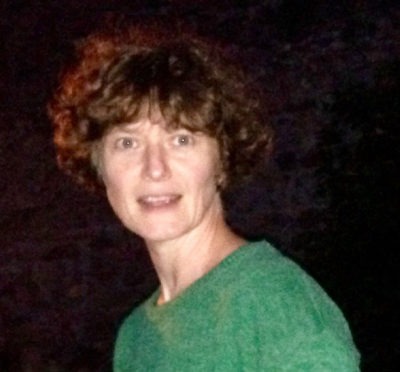Item Link: Access the Resource
Date of Publication: April 16
Year of Publication: 2021
Publication City: Lyon, France
Publisher: Medium - Ecole Urbaine de Lyon
Author(s): Berenice Gagne
Volume: 03
Top photo – “Stockyards adjacent to the Chicago slaughterhouses (circa 1947)” © US Information Agency
A monthly publication by Lyon Urban School (Université de Lyon), written by Berenice Gagne, dedicated to a better understanding of global change and the Anthropocene urban world: a selection of news in many fields of study, which aims to grasp the world we live in and the world to come.
Berenice Gagne
Urban School of Lyon – Watching over the Anthropocene Urban World & Global Change. Born in CO2 332ppm, my children 400 and 406
Enjoy reading or listening to original chronicles: Algorithms , Drink or Drive.
Check out the selection of Anthropocene Good Reads #2020: 60 books in many fields of knowledge to help understand what is happening and what is coming.
If you have any comments or suggestions to enhance this daily monitoring, feel free to share: berenice.gagne@universite-lyon.fr
Follow me on Twitter and on Instagram for a daily selection.
This month, the star of the news is the seaweed!
It is everywhere: in food of course, but also in the medical field, cosmetics, materials, agriculture and even in biofuels. Meanwhile, in the city, we explore the Urk world of underground urban infrastructure — the mines of the future.
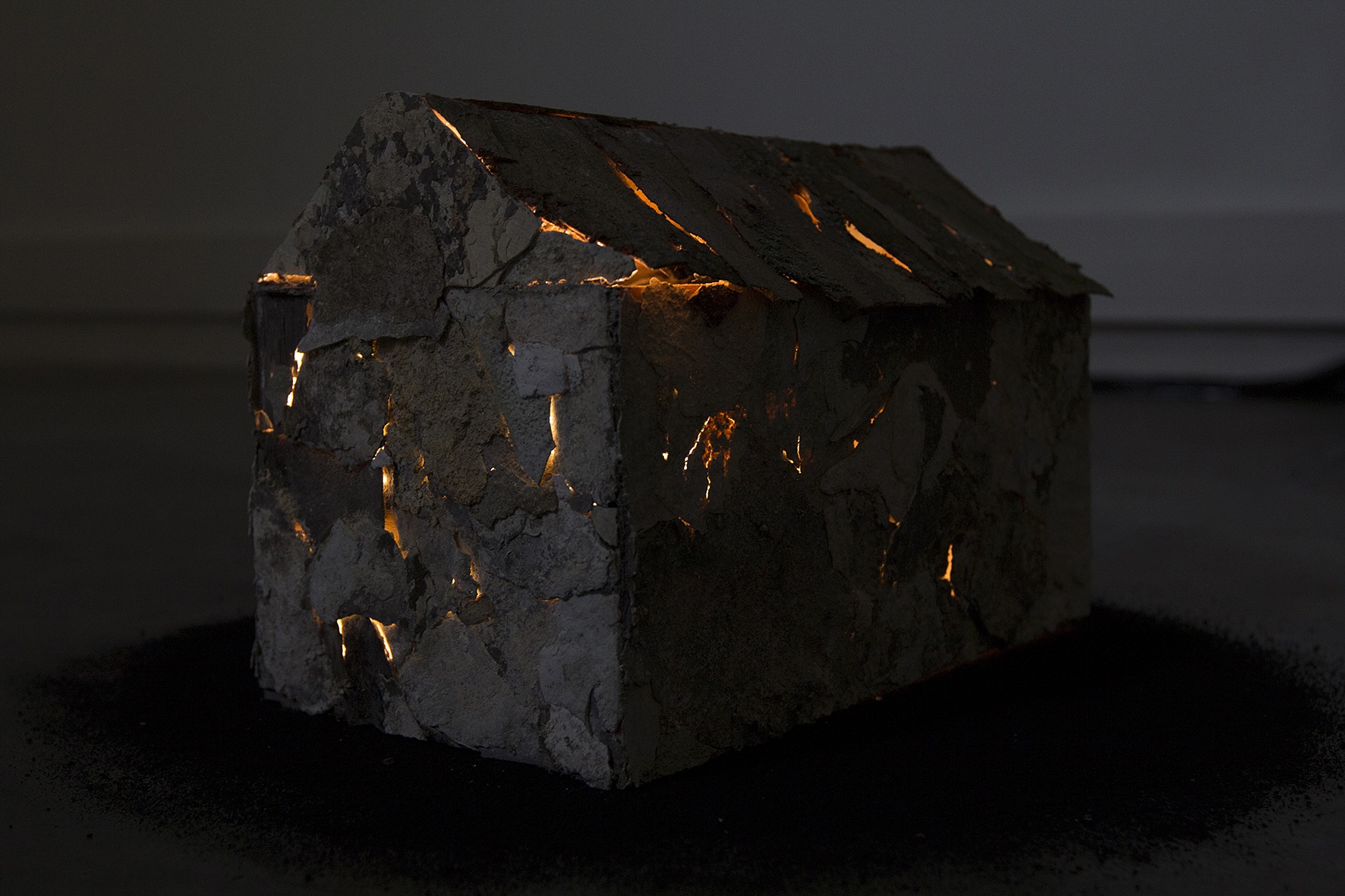 “Home, No Home” © Paul Rosero Contreras
“Home, No Home” © Paul Rosero Contreras
URBAN
– Explore urban underground! How to turn urban underground infrastructure systems into strategic resource mines for a more circular economy? “Cities will be the mines of the future”: Jane Jacobs, The Economy of Cities (1969) (Anthropocene2050, 09/04/2021).
– How will the infrastructure issues related to the rise of transport or delivery drones transform cities? Vertiports, traffic and urban flow management, regulation and security, but also carbon footprint! (Leonard, 30/03/2021).
– Knowing the quality of urban soil is crucial at a time when urbanization is pushing for the restoration of urban wastelands to limit the artificialization of land in rural areas. “The reclamation of wastelands often involves the excavation of large quantities of soil that becomes waste as soon as it leaves the emitting sites, whether it is polluted or not”. This soil is then stored in landfill sites that “sometimes reach saturation point, particularly in the Ile-de-France region”, whereas some of it could be reused. A database of urban soil analyses has been developed to help diagnose soils, particularly those of institutions hosting vulnerable populations (The Conversation, 29/03/2021).
– Acting in cities of 6 countries representing 42% of the world’s population (China, India, Indonesia, Brazil, Mexico and South Africa) to tackle climate change and provide the basis for more sustainable and inclusive development (World Resources Institute, 17/03/2021).
– Urban metabolism: the planning of the anthropocene urban space must engage in a paradigm shift, for example by apprehending “projects by the materials they produce no longer as waste but as resources. The construction site would then take on the value of an urban mine”. (Anthropocene2050, 11/03/2021).
– Transplanting the concept of the “15-Minute City” from Europe to North America risks exacerbating inequalities (Bloomberg, 02/03/2021).
– Who cycles in urban areas? And where? Research has recently attempted to draw up a portrait of cyclists in the city, revealing social and geographical inequalities. The profile reveals “a man in good health, with a degree, a manager or an intermediate profession, who lives and works in city centers”. Indeed, cycling facilities are generally located in city centers, where many executives live and work. Studies in the United States (Detroit, Philadelphia, San Francisco) also show that the development of cycling goes hand in hand with gentrification and “increases spatial divisions, but also gender and race divisions”. Matthieu Adam invites us to take into account sociospatial inequalities at the same time as the issue of mobility and to implement developments beyond urban centers (Le Monde, 27/02/2021).
– “To read the future of cities, look at the sidewalk!”: “An increasingly crowded and coveted space, the sidewalk has become a major strategic issue that raises many challenges for the future” (Urbis, 25/02/2021).
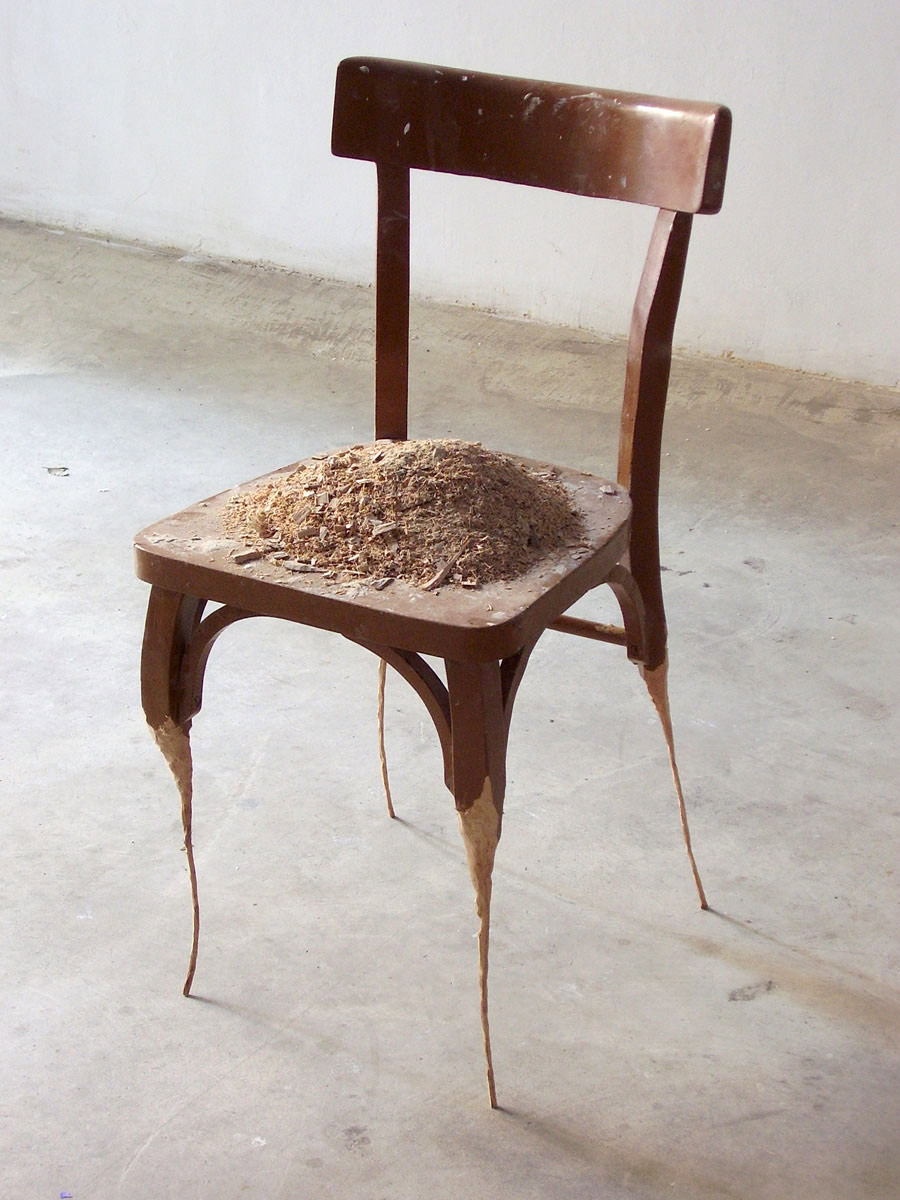
“Subject, Object, Abject” (2006) © Jaime Pitarch (Spencer Brownstone Gallery)
AGRICULTURE & FOOD
– A study measures the carbon emissions of the global food system (responsible for 34% of global emissions each year) by detailing the weight of each step of the food production and supply chain (Anthropocene, 19/03/2021).
– An opinion piece that praises the benefits of agriculture 2.0 through three innovations that are supposed to solve deforestation and the uncertainties of the global food system: vertical agriculture, cellular agriculture and precision agriculture. The article denigrates agroecology as unrealistic on a global scale and prefers to sell the dream (or nightmare?) of advanced robotic techniques, animal-free meat and dairy products, and robotic tractors to “produce any crop anywhere in any season”. The injunction to use technology is unambiguous: “we cannot achieve our climate and food security goals without incorporating agricultural technologies” (The Conversation, 26/02/2021).
ARTS & CULTURES
– “John Davies on the trail of a hidden river”: a presentation of photographer John Davies’ investigation in search of the Tiretaine, a historic river that is nevertheless buried and almost forgotten in the city of Clermont-Ferrand (France). “The photographer’s approach involves a reconfiguration of the perception of the city”. It is no longer a surface but “a web of lines” drawn by the “complex hydrographic system, made up of a host of ramifications” (Anthropocene2050, 11/03/2021).
– How contemporary creation seizes ecological concerns: “diving into the bubbling of green art”. (Les Echos, 10/03/2021).
– “When works of art help to understand climate change”: works of art participate in the reconstruction of the climate past and the evolution of the landscape (France culture, 09/03/2021).
BIODIVERSITY
– Seaweed has become a real craze in recent weeks: the CNRS, the Lloyd’s Register Foundation and the United Nations Global Compact (UNGC) are launching the Safe Seaweed Coalition, “the first international institution dedicated to the valorisation of marine algae. The goal is to develop their production and use in the food, agricultural, medical, cosmetic and materials sectors, while addressing environmental and climate concerns” (CNRS, 17/03/2021). The meat industry even sees algae as the miracle solution for reducing methane emissions from cattle farming (The Conversation, 17/03/2021). However, the enormous scale of global livestock production makes it impractical to supply algae to the world’s 1.5 billion cows, and the algae diet could only be offered for a small portion of the cattle’s short life. To the chagrin of the meat industry, the solution to massively and rapidly reduce methane emissions remains the reduction of meat consumption (Wired, 17/03/2021). Algae are also prized as a biofuel (The Conversation, 01/04/2021).

“Calais beach at low tide”, J.M.W. Turner (1830). Credit: Wikimedia Commons
DECOLONIALISM & POSTCOLONIALISM
– Decolonizing nature in the city: an analysis of people’s experience with nature in the city, how they feel about it, and the meaning they find in it, based on their cultural context. It is time to question the dominant Western representations and values of nature and urban design. Many parks in cities around the world were built during the colonial period, mixing native and non-native plants. Even today, in the older neighborhoods of former colonial cities, non-native trees dominate, to the point of dominating the very names of streets in South Africa: more streets are named after non-native plant species than after native ones. The colonial legacy has also shaped the types of socially acceptable behavior in green spaces: activities of colonial origin are valued (e.g., concerts, art) at the expense of indigenous cultural or spiritual activities such as, for example, gathering for religious or customary ritual. To decolonize nature in the city, it would be necessary to begin by recognizing the diversity of the needs of the inhabitants and to consult the different groups (The Conversation, 24/03/2021).
– 4th Conference on Postcolonial Higher Education in Karachi (Pakistan) on the theme “Reparative Futures: Decolonial Thought in the Global Ruins “. Historian Jean-Baptiste Fressoz highlights the links between colonization and ecological restoration. For example, when Algeria was conquered in 1830, the French colonists described it as a country in ruins, deforested and ecologically degraded. Colonization was thus thought of as a way to repair the environment: “the repair of nature was clearly integrated into the narrative of colonial justification” (Dawn, 24/03/2021).
– A powerful piece on climate change, climate anxiety, racism, and white fragility: how do we put climate anxiety to work for climate justice instead of fueling xenophobic pushback? (Scientific American, 21/03/2021). In the same vein, an article on the links between racism, colonialism and climate injustice (Heinrich Böll Stiftung, 19/03/2021).
ECONOMY
– Anthropocene entanglements: the absence of a typhoon in Taiwan in 2020 has led to a drought in 2021 that threatens the global production of electronic chips. Semiconductors, the island’s leading industry, are particularly water-intensive. Water is used to polish the thin silicon wafers that form the base of the chips (Bloomberg, 29/03/2021).
ENERGIES
– “Decarbonized hydrogen, a race through all continents”: a geopolitical analysis (Connaissance des énergies, 30/03/2021).
– “When oil becomes the energy of the poor”: an analysis of the inequalities linked to access to electric cars (The Conversation, 17/03/2021).
HEALTH
– An excerpt from the book Le Hantement du Monde. Zoonoses et Pathocène by Gil Bartholeyns (Editions du Dehors,2021) : Pathocene, an era of vulnerability. The historian examines our world, haunted by the fear of disease and overwhelmed by emotion in the face of the loss of the planet’s habitability and the erosion of biodiversity. He traces the genealogy of the activities that generate this obsessive relationship with disease and emotion: intensive animal farming, the trafficking of wild animals, the fracturing of natural habitats, etc., and proposes remedies to heal the living and to coexist (lundi matin, 29/03/2021).
– “The city, a big sick body”: a reflection of the philosopher Thierry Paquot on the secular links between city and health (topophile, 14/03/2021).

“Todos los castillos del mundo” (2020) © Abraham Riverón
LAW
– “Governing globalization”: the global crisis created by the pandemic underlines the need to think about “a global governance of common goods” (Revue européenne du droit, dirigée par Mireille Delmas-Marty, n°2, 22/03/2021). Contents:
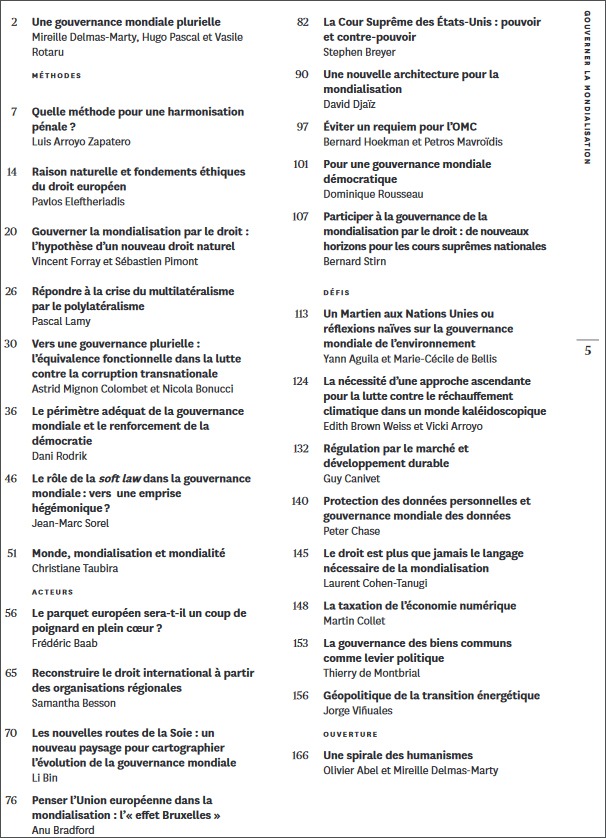
MIGRATIONS
– How to integrate migration issues into climate risk assessment? (Climatic Change, 09/03/2021).
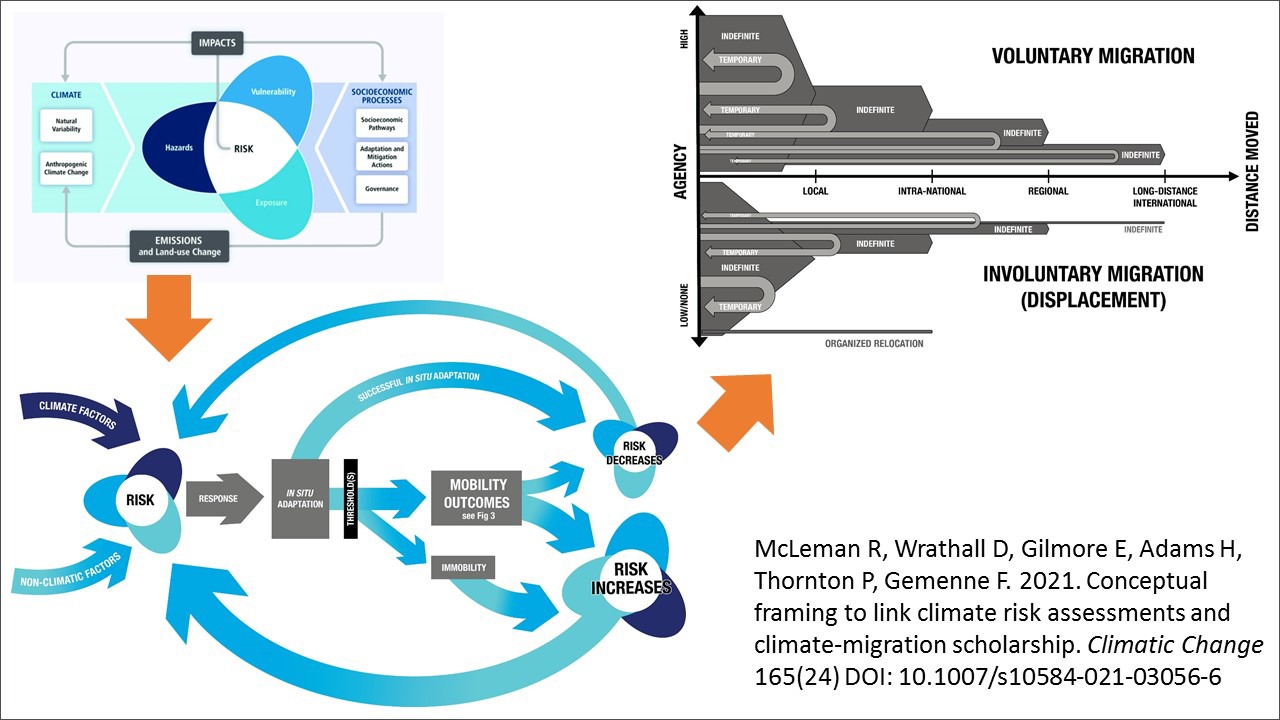
PHILOSOPHY, SOCIOLOGY, ANTHROPOLOGY & OPINION
– The population factor is often blamed for environmental degradation. Demographer Jacques Véron reviews population policies and deciphers stereotypes to remind us of the complexity and interconnectedness of the “population, development and environment” triptych. (AOC, 25/03/2021).
– Reading of Jérôme BASCHET, Basculements. Mondes émergents, possibles désirables (La Découverte, 2021). The author prefers the notion of tilts to that of collapse “which depoliticizes the stakes by postulating a unique trajectory and as if played out in advance”. The tilts make “room for the growing unpredictability of our time and the central role of political mobilization”. The book presents several scenarios and focuses particularly on “considerable societal and civilizational shifts that would commit us to ways of living that escape the logic of the capitalist world-system”. “What could be an arrangement of production that renounces the centrality of economic determinations? What could be a politics that privileges popular self-government and assumes a communal relocalization? How could we establish new relationships with non-humans that cease to extract us from the interdependencies of the living without entirely dissolving the notion of humanity? And by what path do we grow such possibilities? “ (lundi matin, 01/03/2021).
POLITICS & GEOPOLITICS
– Roadmaps to carbon neutrality in 2050: the political challenges of decarbonizing Europe (Social Europe, 22/03/2021).
– “The Politics of the Anthropocene in a World After Neoliberalism”: an overview of the political issues of the Anthropocene (Boston Review, 10/03/2021).
 “Stockyards adjacent to the Chicago slaughterhouses (circa 1947)” © US Information Agency
“Stockyards adjacent to the Chicago slaughterhouses (circa 1947)” © US Information Agency
SCIENCE
– Humankind has taken control of the global water cycle. For 22 months, a team monitored 227,386 freshwater reservoirs around the world, from large lakes to small ponds. The result is that “57% of seasonal changes in global water storage occur in reservoirs controlled by humans, including hydraulic dams” (nature, 03/03/2021).
– A review of geoengineering. A presentation, with a critical eye, of the various technologies (more or less far-fetched) that have emerged over the course of a history marked by the Cold War to mitigate the effects of climate change. It is an opportunity to recall that the IPCC scenario aiming at a temperature increase of (only?) 1.5°C takes into account an important reliance on geoengineering (Anthropocene2050).
– A review of greenhouse gas emission trends from 1990 to 2018 in 10 regions of the world and by economic sector: energy, industry, buildings, transport and land use (agriculture, forestry etc.) (Environmental Research Letters, 2021).
SOCIETY
– “For Planet Earth, No Tourism is a Curse and a Blessing”. The effects of the suspension of tourism, due to the health crisis, on the environment (The New York Times, 07/03/2021).
– “Housing and old age: the challenges of aging”: what territorial approaches in an aging society? (Le Vent Se Lève, 20/02/2021).
WASTE
– A beautifully documented dive into the world of ants which, even in the most densely populated areas of humans, are far more numerous than we are and do the laborious work of making our crumbs disappear (The New York Times, 05/04/2021).
– In the context of the Covid-19 epidemic, the frenzied use of disinfectant wipes, flushed down the toilet, in the United States has increased, regularly clogging drains and making the work of wastewater treatment plants more difficult and expensive (Bloomberg CityLab, 26/03/2021).
– “Thinking politics through waste”, an issue entirely dedicated to rudology around the world (open access): waste governance, local authorities, public service, incentive pricing, waste recovery, zero waste, rubble and recycling (Géocarrefour, 95/1 | 2021).
The views and opinions expressed through the MAHB Website are those of the contributing authors and do not necessarily reflect an official position of the MAHB. The MAHB aims to share a range of perspectives and welcomes the discussions that they prompt.

